摘要随着立体图像技术的不断发展和应用,立体图像质量评价已成为数字图像处理领域的重要研究方向之一。本文针对立体图像质量评价问题进行深入的研究。第一,本文复现一种基于单目和双目视觉信息的立体图像质量评价方法。首先,根据Gabor滤波器的能量响应特性,结合显著性图,分别计算出参考图像和失真图像的cyclopean图像。然后,从cyclopean图像及左右视点图像中提取单目和双目特征并计算得到单、双目质量得分:最后,综合单、双目视觉质量得分,获得立体图像的视觉质量得分。第二,利用两个眼睛的视觉融合来评价立体图像的质量。首先,对立体图像的左右视点图像进行了分解,并将其分解成拉普拉斯金字塔序列。在此基础上,对左右视图、合成图进行多尺度多向频率转换,并提取对比度、熵、能量、逆差矩等特征。最后,运用支持向量回归预测立体图像质量分数。两种方法均在两个立体图像数据库上进行实验,实验结果表明了算法的有效性。关键词:立体图像质量评价:人类视觉系统:单目视觉:双目视觉ABSTRACTWith the continuous development and application of stereo image technology,stereo image quality evaluation has become an important research direction in thefield of digital image processing.This article conducts in-depth research on thequality evaluation of stereoscopic images.Firstly,this article proposes a stereo image quality evaluation method based onmonocular and binocular visual information.Firstly,based on Gabor's energyresponse characteristics and combined with significance maps,the cyclopean imagesof the reference image and the distorted image are calculated separately.On this basis,an adaptive weighted fusion method for feature extraction of monocular and binocularvisual information is proposed,and the corresponding monocular and binocularquality scores are calculated based on this method;Finally,the visual quality score ofthe stereoscopic image is obtained by combining monocular and binocular visualquality scores.Secondly,use the visual fusion of two eyes to evaluate the quality of stereoimages.Firstly,the left and right perspective images of the stereoscopic image wereseparated and decomposed into a Laplacian pyramid sequence.On this basis,multi-scale and multi-directional frequency conversion is performed on the left andright views and composite images,and features such as contrast,entropy,energy,andinverse moment are extracted.Finally,support vector regression is used to predict thequality score of stereo images.The effectiveness of this algorithm was verified by simulating two stereo imagedatabases.Key words Stereoscopic image quality evaluation;Human visual system;Monocular vision;binocular vision第一章绪论1.1课题的研究背景及意义随着社会的不断变化和科技的不断进步,图像已成为人们日常生活和工作中不可或缺的重要组成部分。图像是一种重要的信息传递工具和媒介,人们离不开图像来记录、展示和传达信息,如照片、视频、图表等。因此,图像处理技术的发展也越来越受到人们的关注和重视,以满足不断增长的图像需求和应用场景。立体图像质量评价是立体图像处理和传输中的重要研究技术。随着立体成像技术的迅猛发展,越来越多的立体图像呈现在人们的日常生活中,3D电影和视频为人们带来身临其境的视觉享受。然而,图像在获取到显示的过程中,不可避免地会引入多种噪声,包括但不限于JPEG(JPEG)压缩失真、JPEG2000JP2K)压缩失真、加性白噪声(WN)失真、快速衰落(FF)失真、高斯模糊(BLUR)失真等,这些噪声会对图像质量产生负面影响进而影响人们的视觉感受。为了提升用户的视觉体验,获取更高质量的立体图像是一种很好的解决方案。因此,设计出一种高效的立体图像质量评价(Stereoscopic Image Quality Assessment,,SIQA)方法成为当前立体图像质量评价领域的一个热点。1.2课题的研究现状目前,立体图像质量评价方法可以分为两类:主观评价和客观评价。主观评价通过被试者观看立体图像并依据其主观感知对其打分,所以主观评价是一种更加符合人类视觉认知的方法,但这种方法具有耗时且缺乏实时性的缺点。客观评价方法则通过数学模型对图像质量进行评价,以判断其优劣程度。与主观评价相比,客观评价在时间和应用上更高效。常用的客观评价方法包括全参考、半参考和无参考三种方法。全参考方法是通过对比参考立体图像和失真图像之间的差异来评价图像质量,如PSNR(PeakSignal-to-Noise Ratio)m VIF(Visual Information Fidelity)R)SSIM(StructuralSimilarity Index Metric)]等。而无参考方法则是直接从失真图像中提取相关的特征来评价图像质量,如BRISQUE(Blind/Referenceless Image Spatial QualityEvaluator)等。半参考
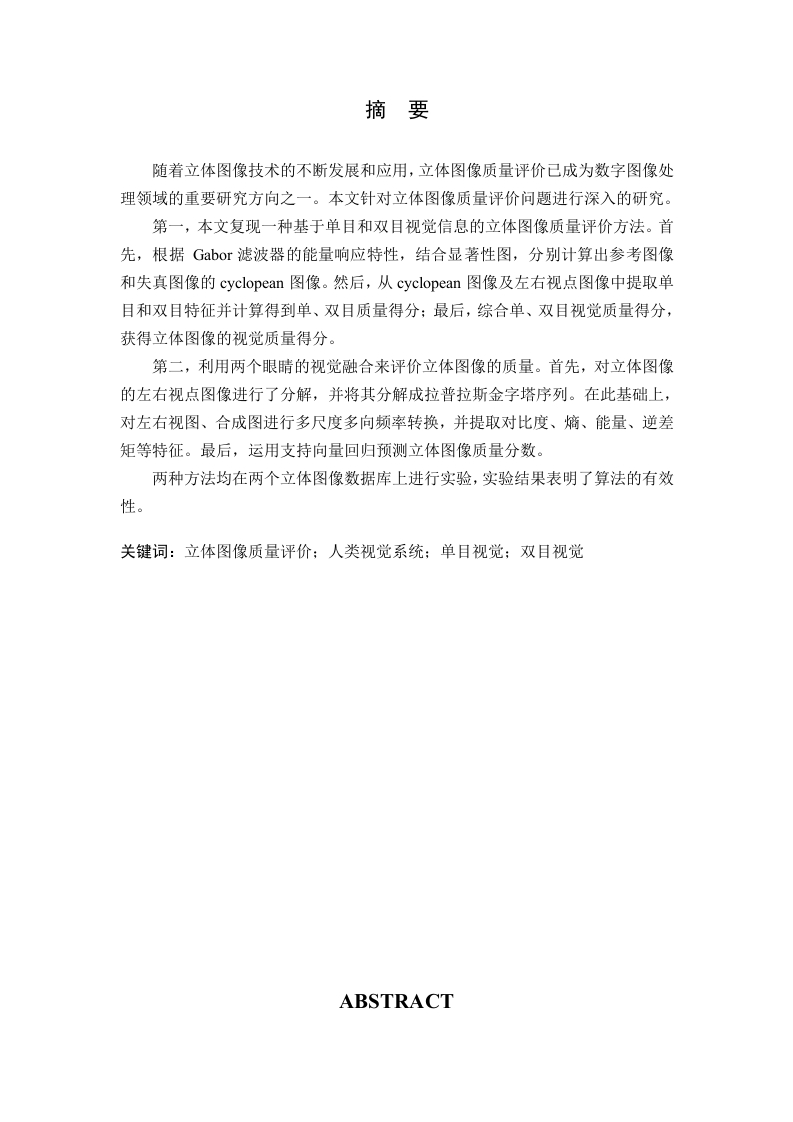
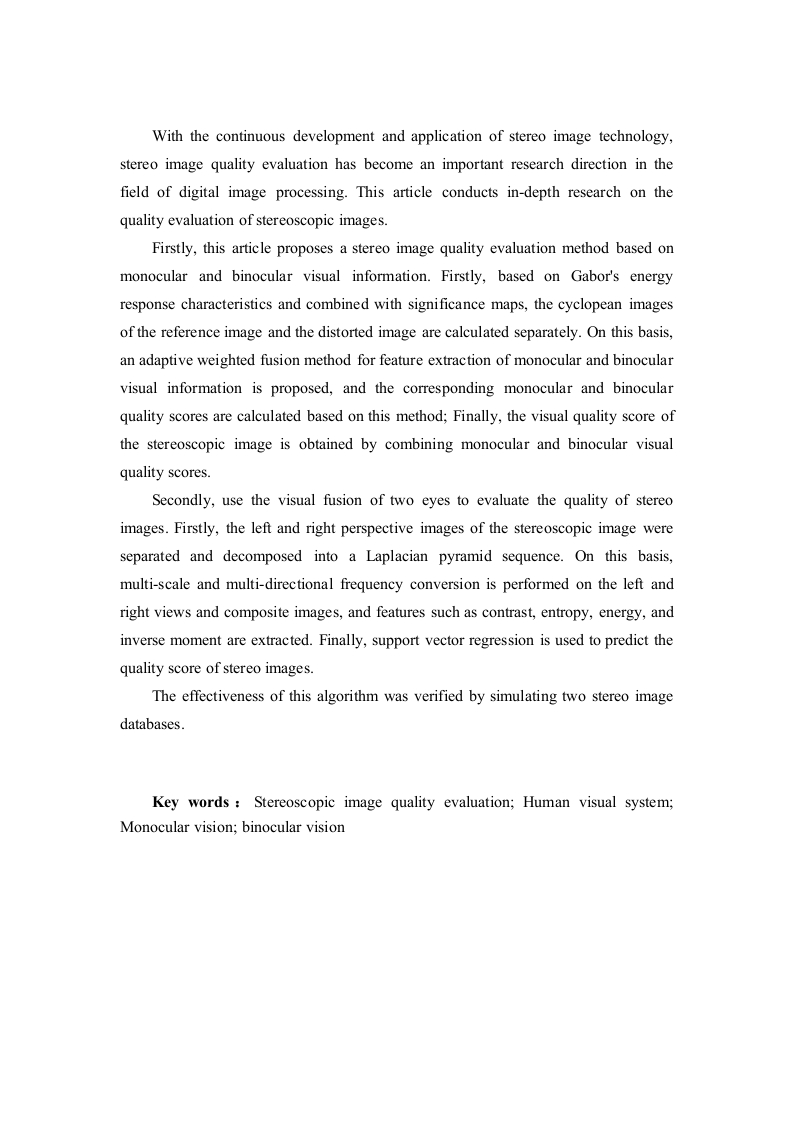
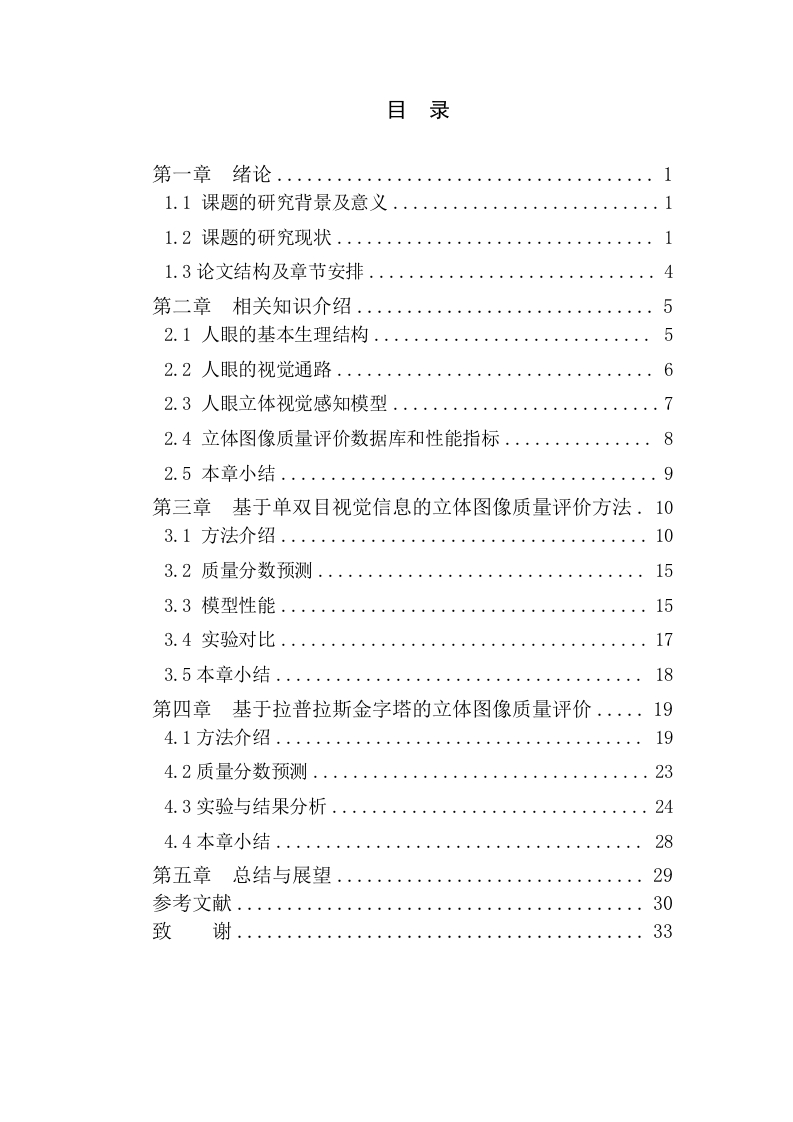
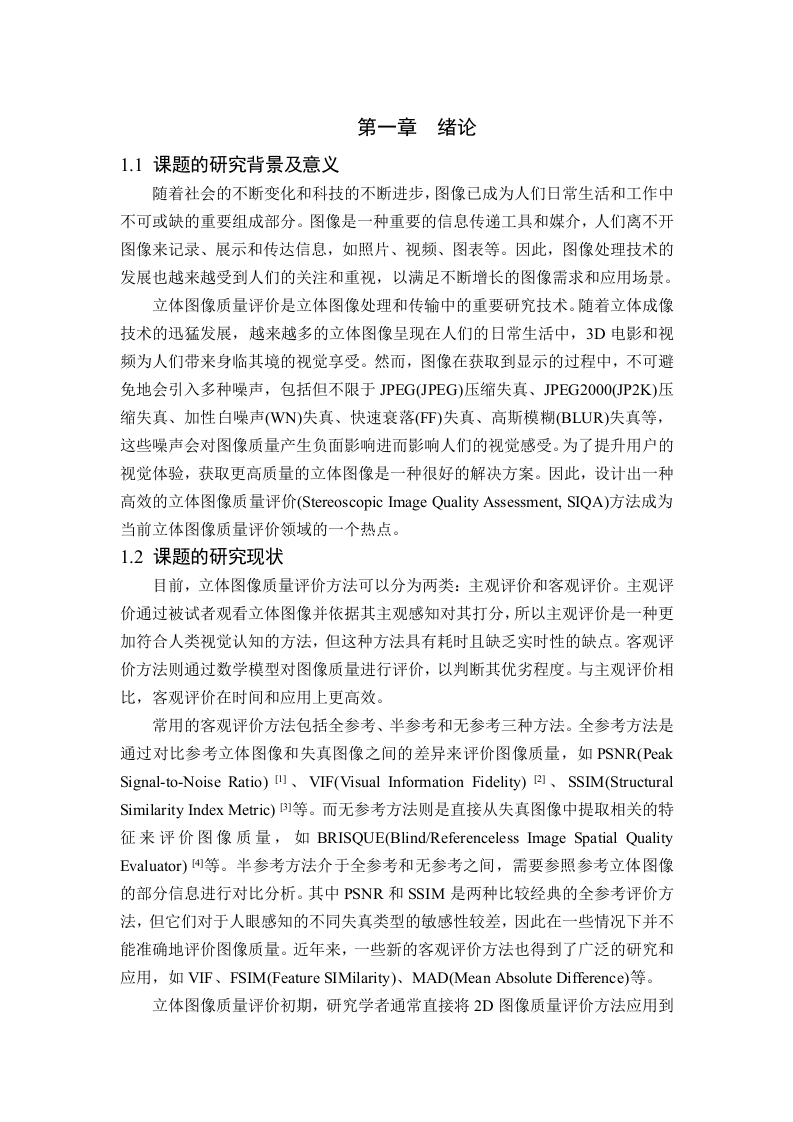
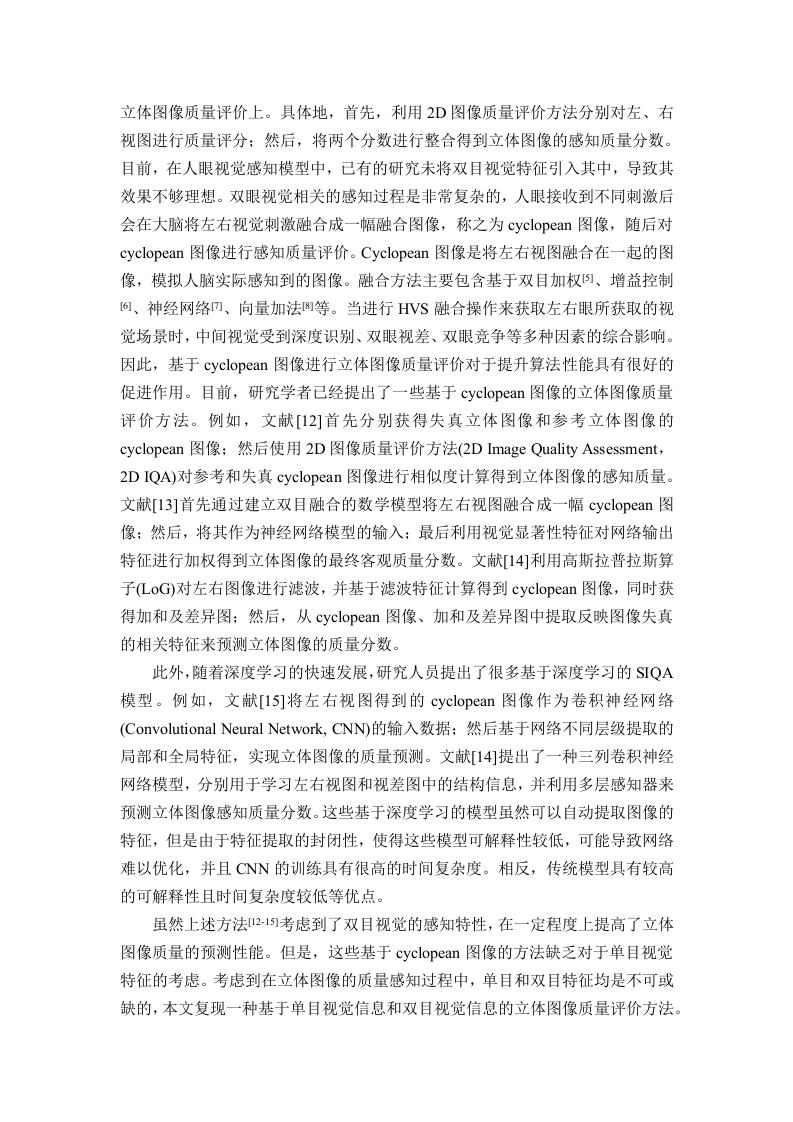
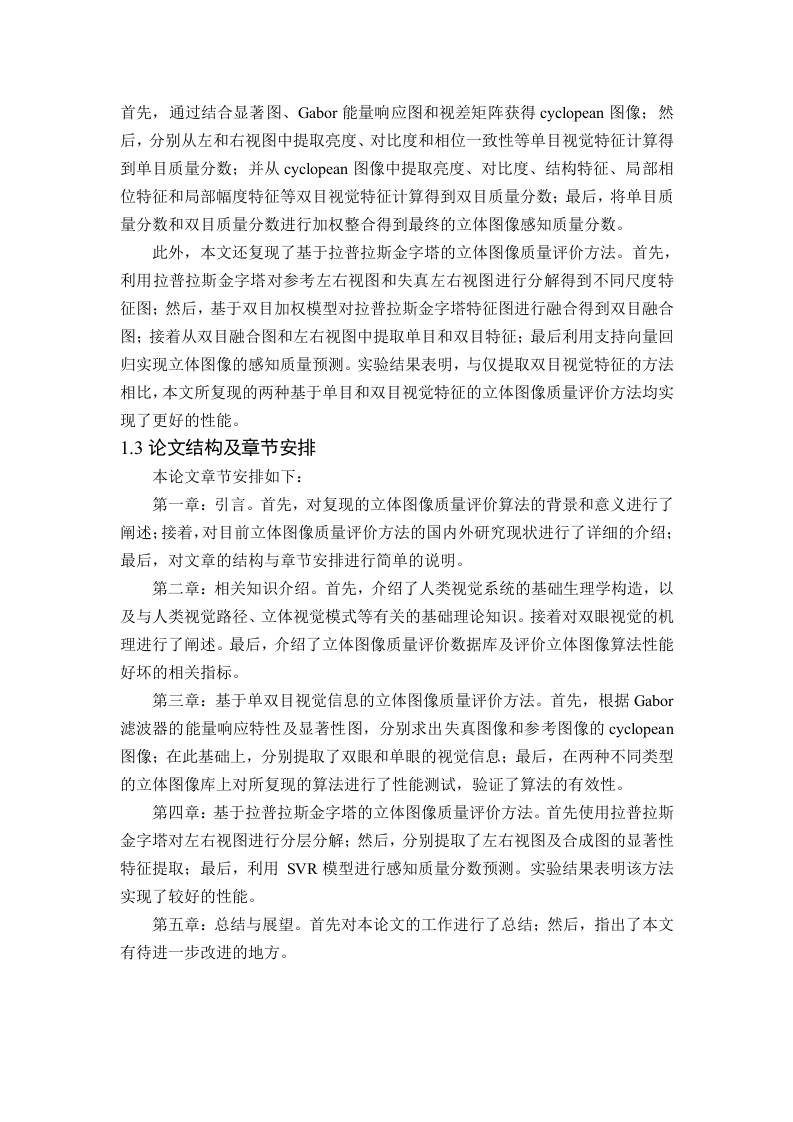
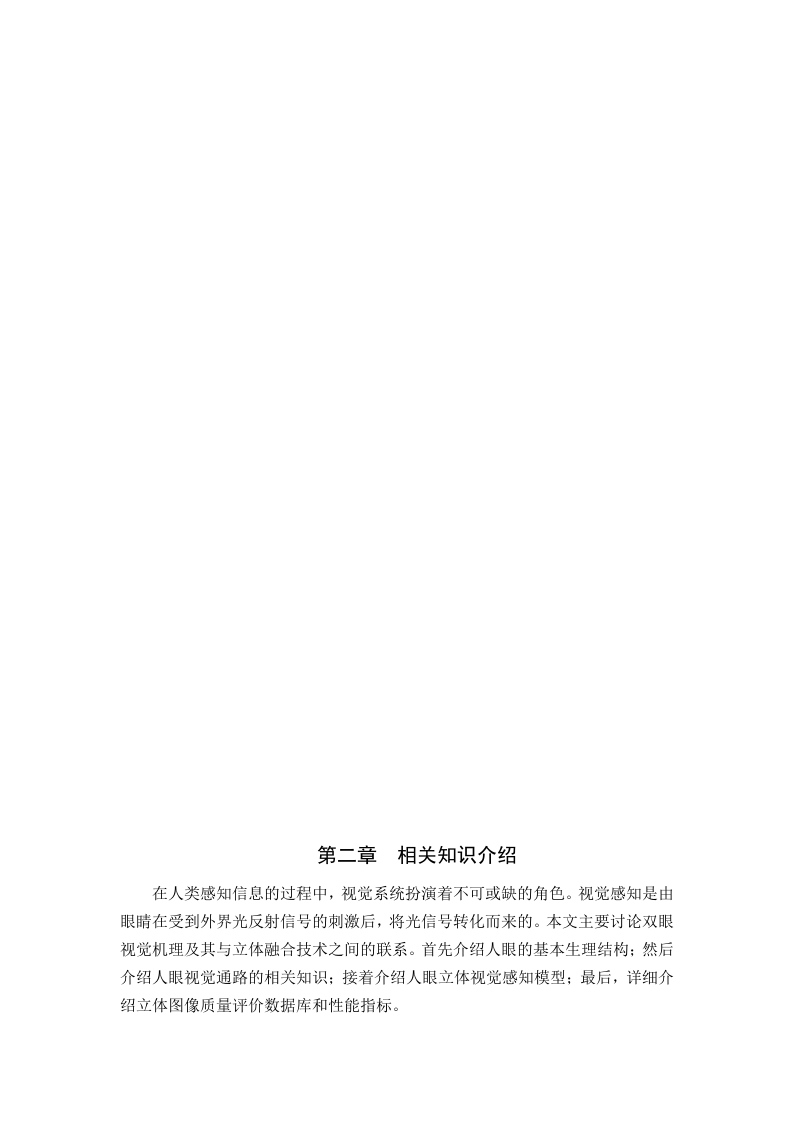
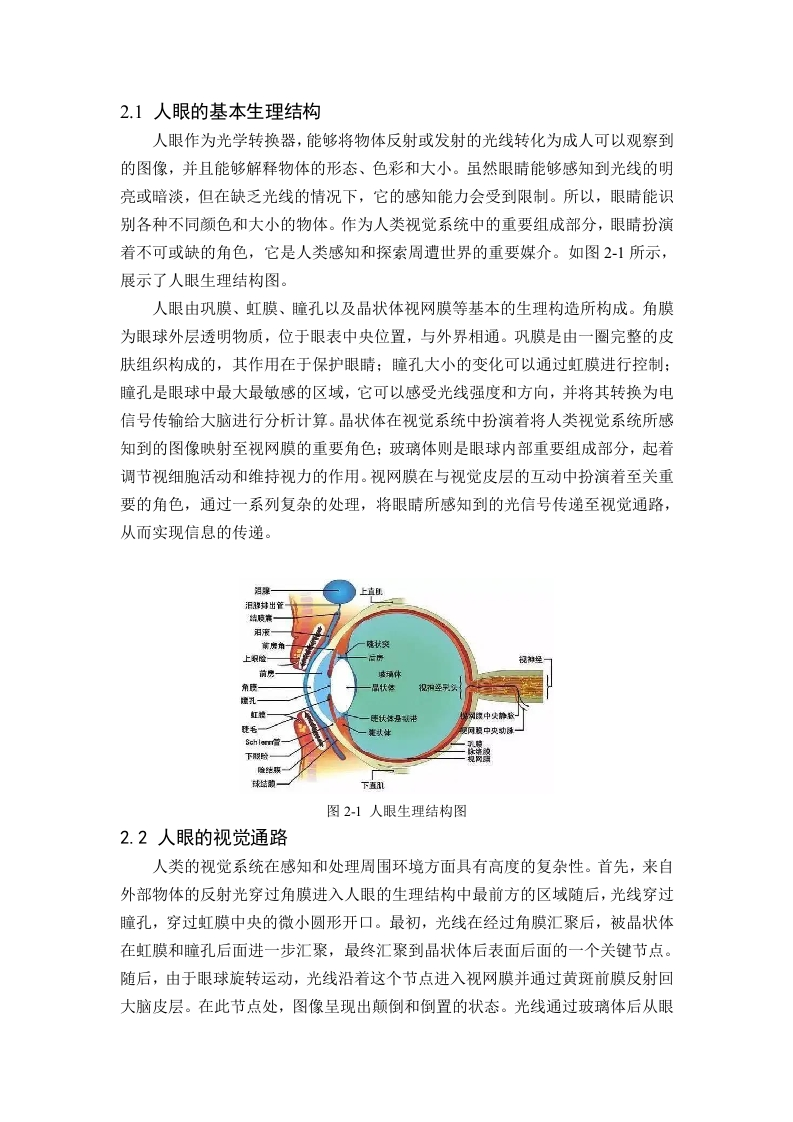









暂无评论内容